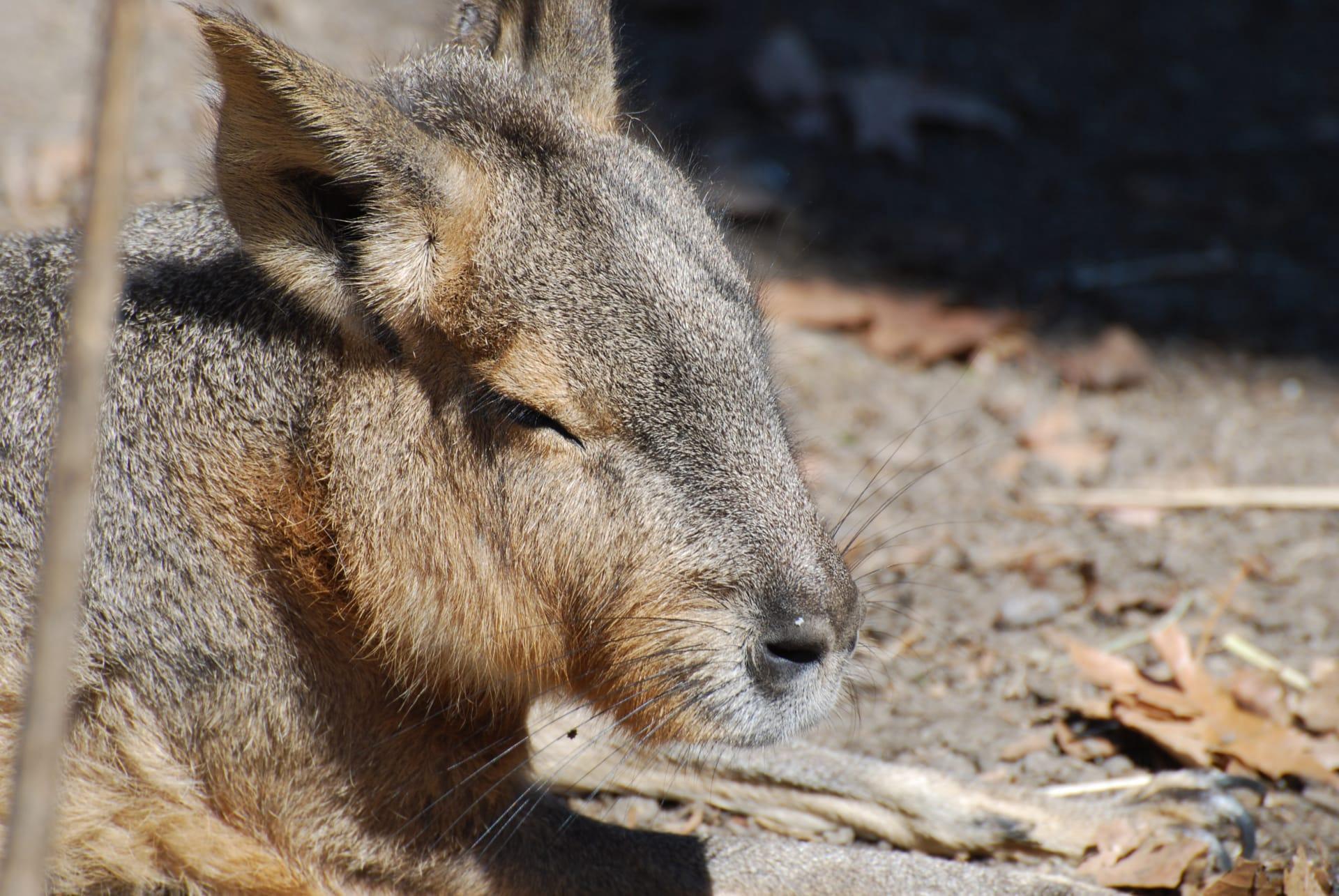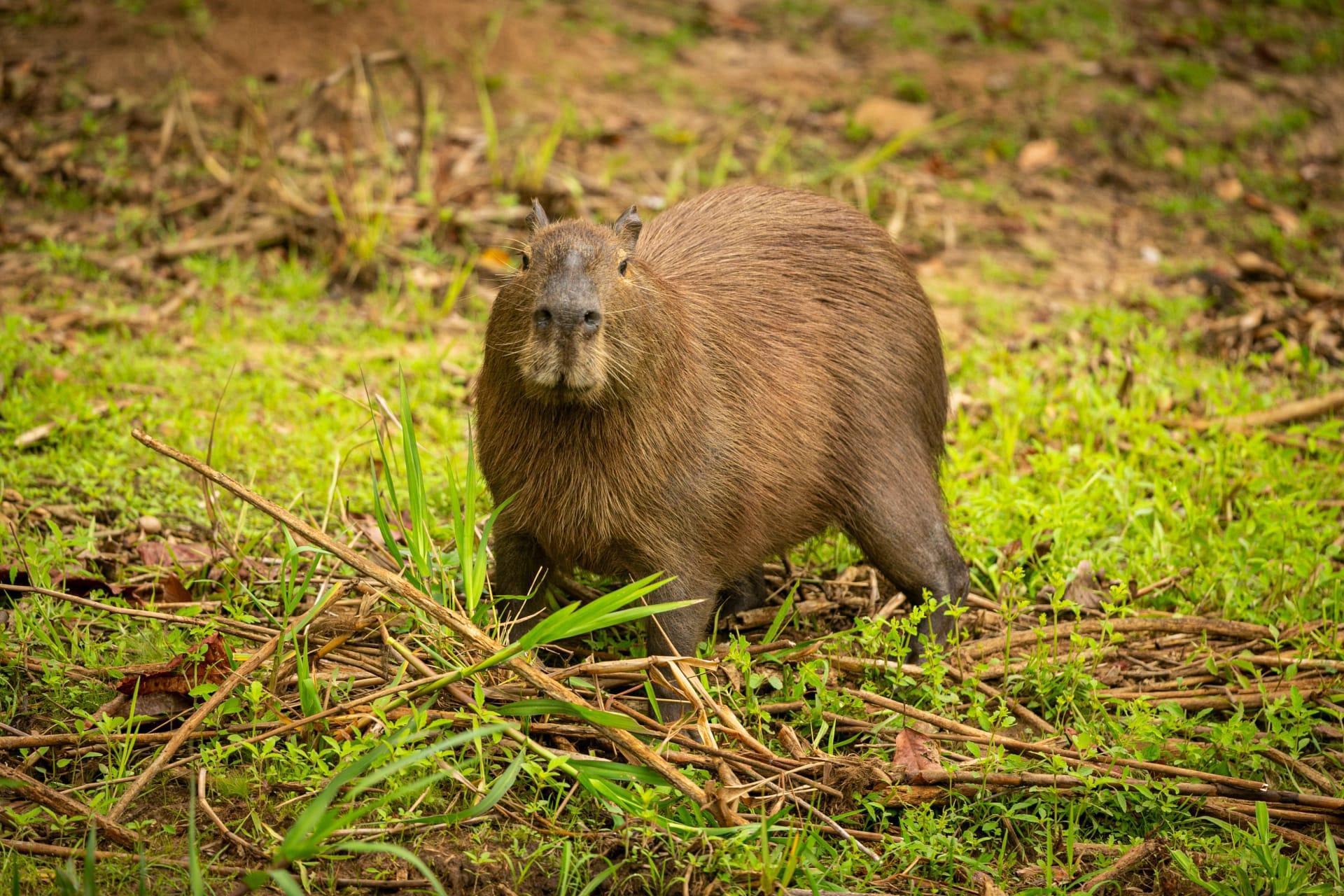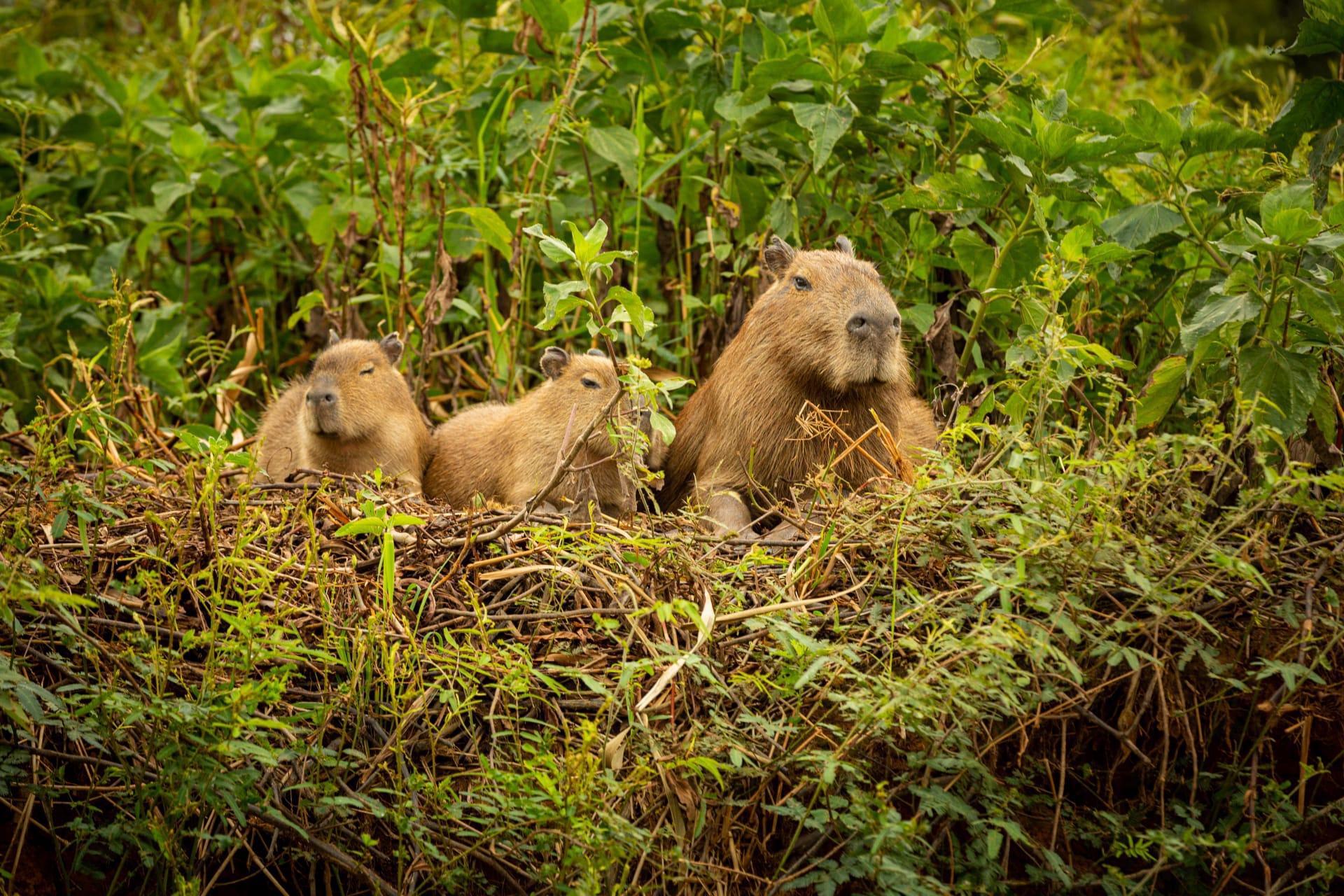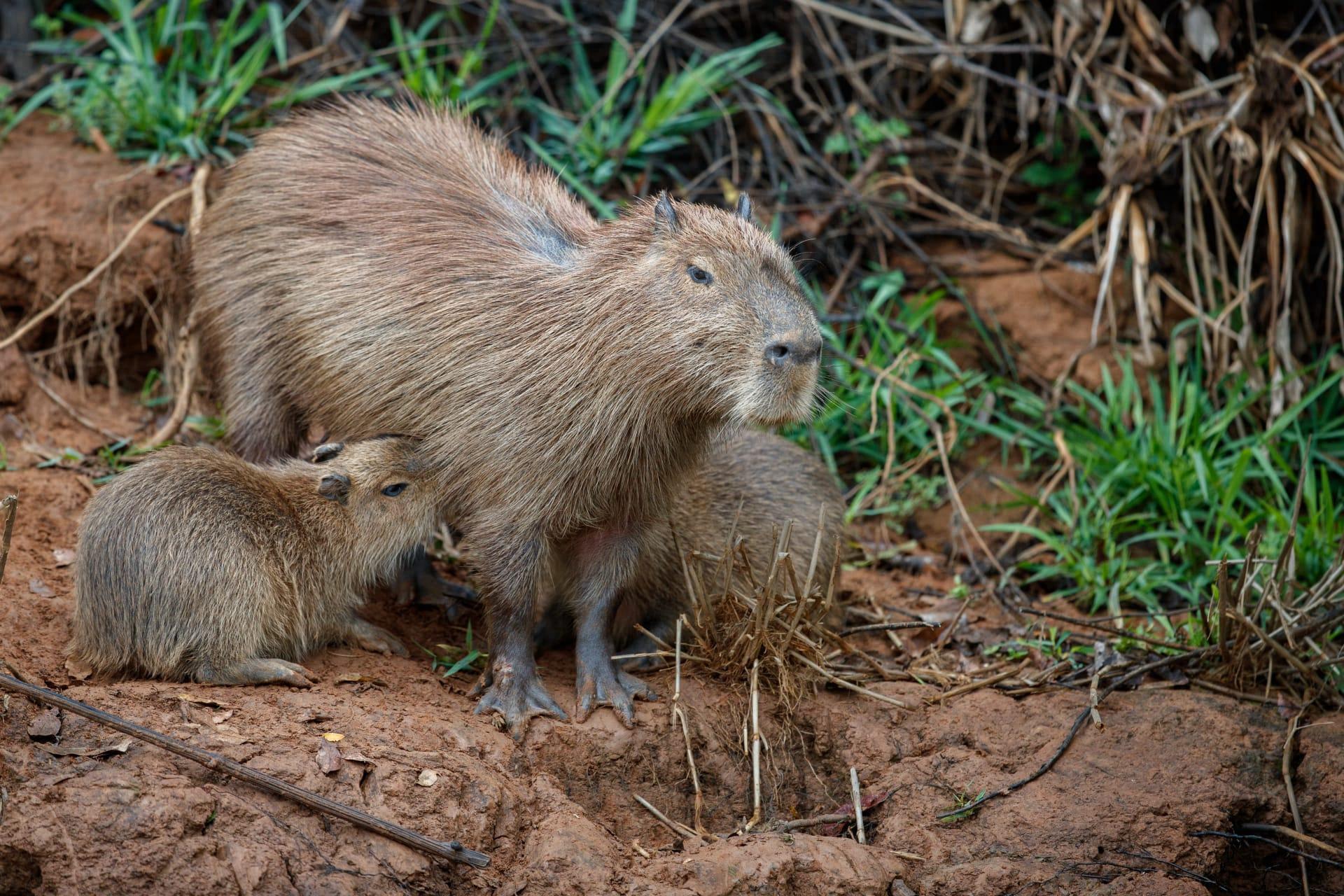Capybara
- Home /
- Mini Encyclopedia /
- Animal /
- Capybara
1
The Capybara, known scientifically as Hydrochoerus hydrochaeris, is the largest rodent in the world and belongs to the Caviidae family. This impressive creature can weigh up to 146 pounds (66 kilograms) and measure up to 4.4 feet (134 centimeters) in length. Their physical characteristics include a heavy, barrel-shaped body, a short head, and reddish-brown fur on the upper part of their body that turns yellowish-brown underneath. They have slightly webbed feet and vestigial tails, adaptations that are crucial for their semi-aquatic lifestyle.
Capybaras are native to South America, thriving primarily in regions that span across Venezuela, Colombia, Brazil, Argentina, and Paraguay. They are found in a variety of habitats, predominantly in densely forested areas near bodies of water such as rivers, ponds, marshes, and lakes. Capybaras are highly adaptable and can inhabit different environments within their range, but they always remain close to water sources. The availability of water is a critical factor for their survival, as it provides them with a refuge from predators and a source of the aquatic plants they feed on.

2
Question: Do Capybaras live in large family groups or alone?
Answer: Contrary to popular belief, Capybaras are highly social animals and live in groups. These groups usually consist of 10 to 20 individuals, but during the dry season, they can congregate in much larger groups of up to 100 individuals. The social structure of a Capybara group is complex, often comprising a dominant male, several females, their young, and subordinate males. This social system plays a crucial role in their survival, providing safety in numbers from predators and aiding in the rearing of young.

3
Capybaras have developed unique survival strategies to adapt to their environments. One key strategy is their semi-aquatic lifestyle. They are excellent swimmers and can stay submerged for up to five minutes, using this ability to escape from predators. Their nostrils, eyes, and ears are positioned high on their heads, allowing them to remain mostly submerged while keeping alert. Another survival trait is their crepuscular and nocturnal behavior. Capybaras are most active during dawn and dusk, feeding on grasses and aquatic plants. This behavior reduces competition for food and exposure to predators.
Reproduction is another significant aspect of their survival strategy. Capybaras have a high reproductive rate, with females capable of birthing a litter of up to eight pups after a gestation period of about 150 days. This frequent reproduction ensures the continuity of the species despite high predation rates. Additionally, their social structure, where group members collectively care for the young, increases the survival rate of the offspring.

4
In their ecosystem, Capybaras play a vital role in maintaining the ecological balance. They act as key grazers, feeding on a variety of vegetation, which helps control plant growth and maintain open areas near water bodies. This grazing behavior can also facilitate seed dispersal, contributing to the diversity of flora in their habitat.
Moreover, Capybaras serve as an important food source for many predators, including jaguars, anacondas, and caimans. Their presence helps sustain these predator populations, which in turn maintains the natural balance of the ecosystem. Additionally, Capybaras are a popular species for ecotourism, attracting nature enthusiasts to their habitats, which can lead to increased environmental awareness and conservation efforts.

5
Film: "Capybaras: The Gentle Giants" is a documentary produced in the United States in 2020. It explores the life of Capybaras in the wild, showcasing their social behavior, habitat, and interactions with the ecosystem. The film provides a comprehensive view of these creatures, highlighting their importance in South American wetlands and the challenges they face in the wild.
Book: "Capybaras: A Natural History of the World’s Largest Rodent" by Rexford D. Lord, published in the United States in 2009, offers a detailed account of Capybara biology, behavior, and habitat. Lord combines scientific research with observations from his travels in South America to provide an insightful look into the life of these fascinating rodents.
Book: "The Secret Life of Capybaras" authored by Elizabeth Greene in 2016, also in the United States, delves into the social and ecological aspects of Capybaras. Greene's book is rich in details about their group dynamics, reproductive strategies, and role in the ecosystem, making it a valuable resource for anyone interested in understanding these unique creatures.